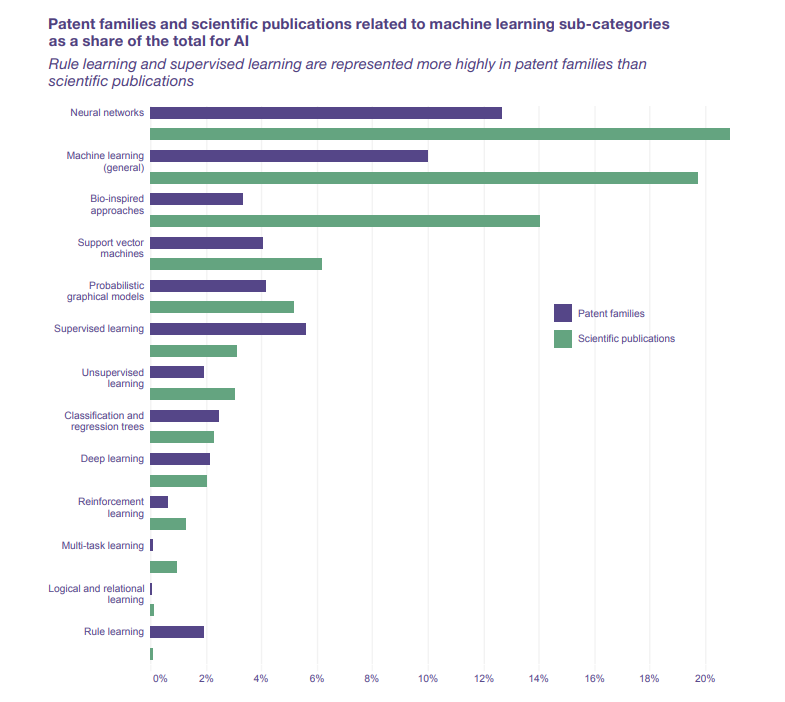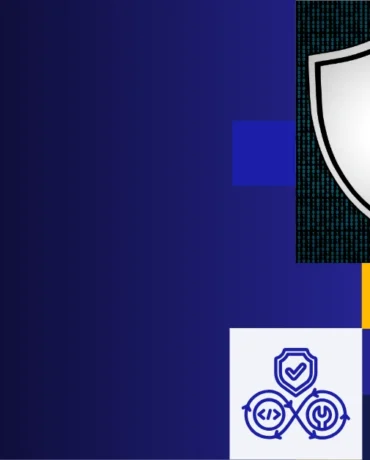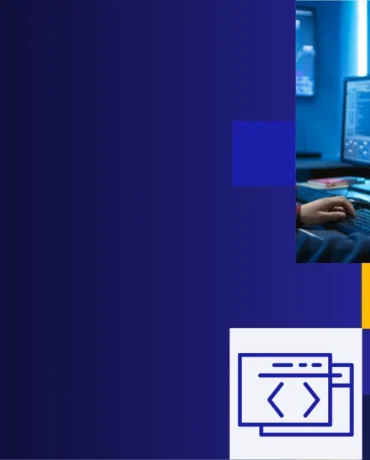“Top technology trends” is the keyword for which you may make the research at the end of every year. From Gartner, Forbes to Wall Street Journals, you can find interesting topics to watch during the upcoming year.
Below are the top 5 interesting trends that Sunbytes considers will grab the huge attention of Tech fans during 2022. Let’s have a look!
1. Metaverse Trend
The first one of the technology trends that we cannot mention is Metaverse. At the Facebook Connect conference in October 2021, Facebook announced that it would change its name to Meta, reflecting its ambition beyond the limits of the social network. The new brand name – Meta- is inspired by the metaverse (super universe), representing the concept of working and playing in the virtual world. Facebook’s movement lifted the veil on the metaverse storm which has been brewing since mid-2020. From Facebook (Meta) to Microsoft, IT players have been pumped about this virtual world and its potential for their enterprises, ranging from commerce to entertainment. According to GlobalData – an analytics firm – mentions of “metaverse” surged by more than 135 % in Q4 2021 after the call in the Facebook Connect event.
So, what exactly is the metaverse? Metaverse is a virtual world built by using the Internet and augmented reality tools (such as VR, AR, or other devices) to provide consumers with the most realistic experiences. The metaverse is identified as a universe that exists along with the actual world. In this world, there is no limitation for innovation, and creativity, an achievement resulting from the work of the developers. If you find it difficult to imagine how Metaverse is, you can watch the film “Ready Player One” to get the basic concept of the metaverse. The metaverse is designated to consist of 4 primary layers:
- Foundation layer: The Internet serves as the cornerstone for connection.
- Infrastructure layer: In Metaverse infrastructure, there are physical components that allow us to have real experiences. However, this layer also contains some well-known advanced technologies we have been Blockchain, AI, Big Data,…).
- Content layer: This layer will include games and apps that allow users to immerse themselves in one or more distinct worlds for the most immersive experiences.
- Real metaverse: When the lower levels of the Metaverse have developed to a certain amount, we will have a true Metaverse.
Along with Facebook, around 160+ firms are developing metaverses. Among them are the Tech giants:
- Epic Games, the creators of the famous immersive video game Fortnite. It just launched a $1 billion investment round to boost the metaverse’s growth opportunities.
- Microsoft is attempting to create a work-focused metaverse that integrates its massively popular services in a digital environment known as Mesh. You’d be able to utilize Microsoft Teams, Windows, and other VR services inside Mesh.
- Apple is considered “an unexpected dark horse” in the race to the metaverse. It is actively improving its breakthrough VR equipment that has the potential to change the metaverse experience.
The horizon world video demonstration by Oculus – a company owned by Facebook
2. Data privacy regulation
For the last decade, data ownership has become a corporate imperative. Tech dominant corporations like Amazon, Facebook (Meta), Google, and Apple have gained enormous advantages from owning a big number of user data. Competition to access user data has grown fierce inside the Tech industry, whether among SMEs or among conglomerates. While the increased development and gathering of consumer data has spurred innovation, it has also raised security concerns and triggered waves of consumer privacy laws, such as the EU’s General Data Protection Regulation.
GDPR went into force on May 25, 2018. The implementation of legislation governing the protection of personal information has had a significant influence on the business of many Tech firms. Three days after the GDPR went into effect, the NGO La Quadrature du Net filed a formal privacy complaint against Google, Apple, Facebook, Amazon, and Microsoft on behalf of 12,000 individual customers.
Consequently, Amazon was fined $887 million in July 2021, the biggest GDPR penalty ever issued. Whereas, Facebook is still figuring out how to deal with the investigation and sanctions that have resulted from its privacy breaches. The business was fined $5 billion in July 2019 by FTC for its privacy violation, the largest penalty in history to a Tech company by a regulatory organization.
The rise of consumer privacy rules also prompted Google and Apple to release recent privacy updates:

Google announced that it plans to remove third-party cookies and introduce Privacy Sandbox by 2023 to enable personalized ad delivery while protecting user privacy.

In April 2021, Apple will begin its App Tracking Transparency program. The iOS14.5 release includes a feature that allows users to disable adblocking tracking for selected apps.
3. Cloud-native platforms & microservices
Cloud-native platforms are solutions that enable you to build new robust, elastic, and agile application architectures and help you to adapt to fast digital change.
For example, microservices built on cloud platforms will be packaged into containers and operate on cloud computing infrastructure. The apps are created, tested, and deployed in the cloud, and as a result, they can operate on a private, public, hybrid, or multi-cloud architecture.
A microservice architectural design is a collection of loosely connected services that function together. Each service has its functionality and is a stand-alone component. These reusable, robust, and scalable functionality models are managed via a container-orchestration system. The fact that an app is developed and operated by utilizing cloud-native architecture also means that the app is compatible with a variety of platforms and cloud providers. This advantage gives your company all the flexibility it needs, as well as a broader set of resources. More than that, by building an application with the principles of cloud-native design, developers can focus on enhancing user experience and adding new features without having to worry about downtime or availability.
4. Tech labor shortage pushes mergers and acquisitions
Though it was not named as one of the “technology trends”, tech labor shortage has become a hot topic in many conversations of the company executives since 20202. Last 2021, CNBC reported in a quarterly survey of its Technology Executive Council that about 57% of tech executives regarded staffing issues as their top concern. Following this survey, a recent analysis of employment data issued by the US Labor Department shows that employers in Jan 2022 posted roughly 340,000 unfilled IT job openings, increasing by 11% compared to the 12-month average and including a variety of positions, industries, and locations.
Among other solutions to the IT shortage such as dedicated teams, and outsourcing, many C-level executives have brought merger and acquisition (M&A) to the table, a tactic that is helping drive up the number of M&A deals throughout the IT and business services sectors. Accenture PLC, one of the more prolific acquirers last year, invested nearly $4.2 billion across 46 acquisitions in its fiscal year 2021, in part to “bring talents and new capabilities in key, high-growth sectors of the industry,” according to the Wall Street Journal. “The main driver for the very robust market (M&A) was the technology sector, which experienced a 71% growth in deal valuations year on year, breaking the US1 trillion mark for the first time,” said David Broadley, Allen & Overy’s Global Co-head of Corporate/M&A. ” Agreements in the Technology industry accounted for 20% of all worldwide M&A deals by value and 22% by volume.”, he said.
Apple was another example. The company continuously acquired 25 AI startups between 2016 and 2020. According to the Business Sale Report, the major reason for these takeovers on the tiny or start-up enterprises was to recruit qualified engineers. Apple CEO Tim Cook also stated in an interview with CNBC in 2019 that Apple acquires a firm every two to three weeks. Cook explained that these transactions were “primarily looking for talent and intellectual property.”
Other cases cited by The Indian National Association of Software and Service Companies for this M&A strategy included Infosys’ acquisitions of Simplus and Blue Acord iCi, Cognizant’s acquisition of Servian, and Tech Mahindra’s acquisition of DigitalOnUs, all of which were aimed at possessing specific capabilities.
5. AI engineering
The fifth topic of the technology trends that we cannot forget to mention is AI engineering. The term artificial intelligence (AI-Artificial Intelligence) was first mentioned by John McArthy in 1956 at the Dartmouth conference in Hanover, New Hampshire – USA. He defined AI as “the science and engineering of creating intelligent machines”. AI systems include the processes, hardware, software, data, and knowledge necessary to develop machines that are capable of modeling, simulating, or imitating the functions of the human brain and that can carry out activities such as reasoning, communicating, creating, etc.

Number of patents for AI in the World Intellectual Property Organization (WIPO) 2019 report
Since its beginning, AI has stepped up to be one of the hottest technology trends in any technology summits or conferences. AI also has increasingly permeated into production and human life. According to The World Intellectual Property Organization (WIPO) in 2019, almost 340,000 applications for patent protection related to AI have been filed internationally, and more than 1.6 million scholarly publications on this subject have been published since 2000.
AI is an extremely promising field with several applications, including:
- Robots: machines that mimic human behaviors and gestures.
- Vision systems: hardware and software that allow picture collecting, storage, and analysis.
- Natural language processing (NLP): a mechanism that enables computers to understand and respond to orders in natural language.
- Learning systems: approaches for teaching computers to learn from input data, allowing the computer to modify functions and react to circumstances based on the responses received and to take responsive actions.
- Neural networks: computer systems that imitate human brain activities. Applying knowledge representation and inference methods will allow computers to perform human-like thinking.
- Expert systems: systems that use knowledge and inference processes to solve various challenges. An expert system will analyze massive volumes of known data and develop judgments based on that data.
One of the most prominent uses of AI technology is generative AI — a machine learning algorithm that learns about the content or things from data and then uses them to build fully unique, realistic products.
Generative AI may be used for a variety of purposes, including producing software codes, assisting medication research, and targeted marketing, but it can also be deployed for fake identities and other illegal acts.
Gartner predicts that by 2025, generative AI will account for 10% of all data created, up from less than 1% at present.
There are more and more technology trends, for example, 3D printing is bringing a comprehensive transformation to the printing industry; or the pay later purchases are now gradually killing the credit cards industry. However, the above 5 technology trends are the ones that we believe will influence most of us – the Tech workers then stay tuned for more updates from Sunbytes on what is going on in the world technology sector.


